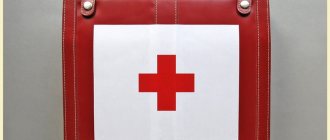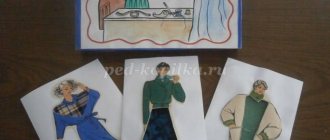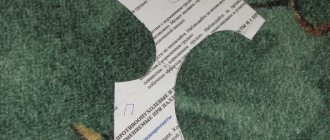"Feeding the doll Katya"
Goal: To consolidate children’s knowledge about tableware, to activate children’s speech, to cultivate a culture of behavior while eating, and a caring attitude towards the doll.
Materials and equipment: Katya doll, a set of dishes in the play corner.
Progress of the game: The game is played in the game corner. The teacher shows and tells what kind of dishes are used at lunch (deep plates for soup, shallow ones for second course, spoons, forks, cups, etc.), shows how to set the table, rules of behavior at lunch, how to use cutlery. Invites the children to feed the doll lunch.
“We’re going to kindergarten by car”
Goal: To activate and develop children’s speech, to reveal the game’s intent. Form initial skills of role behavior.
Material and equipment: Machines
Progress of the game: The teacher reports that today they are going to kindergarten by car and we need to drive through crowded streets, and for this we need to know the rules (do not drive into houses, do not hit pedestrians, drive carefully on the roads without hitting oncoming cars, etc. .d.). Next, the teacher pushes the children to play actions, giving hints and monitoring the progress of the game.
“Doll Katya went to the store”
Goal: To activate and develop children’s speech, to reveal the game’s intent. Form initial skills of role behavior.
Material and equipment: Katya doll
Progress of the game: The teacher tells the children that the Katya doll is going to the store for groceries, but she doesn’t want to go alone because she needs to buy a lot of groceries. Then he selects helpers for the doll from among the children. "Grab your bag and let's go." Place toys, boxes, jars in your bag, commenting on your actions. “This cube will be our butter. But this box is corn flakes. The rings from the pyramid are dryers, and the parts from the designer are cookies.” Next, the teacher encourages the children to take game actions and monitors the progress of the game.
“A letter arrived at the kindergarten”
Goal: Develop dialogic speech, learn to perform several actions with one object.
Material and equipment: Letter and teddy bear
Progress of the game: The teacher tells the children that a letter has arrived at the kindergarten. And in this letter Misha asks very much to send him a parcel. Shall we send? Then you need to collect gifts for him. Finds out from the children what gifts Misha likes. The children are collecting a bag of gifts for Misha. Next, the teacher encourages the children to take game actions and monitors the progress of the game.
"The bunny goes to kindergarten"
Goal: To activate and develop children’s speech, to reveal the game’s intent. Form initial skills of role behavior.
Material and equipment: Bunny
Progress of the game: - Guys, Bunny needs to go to kindergarten, but it is very far away, so Bunny decided to go by car. Help him get to kindergarten. We need a car driver. But not everything is so simple, because you need to go through various obstacles. Next, the teacher monitors the game and places obstacles in the way of the car.
“We do the hairstyle for the doll Katya”
Goal: To develop initial skills in role behavior, to connect plot actions with the name of the role.
Material and equipment: Tools for playing hair salon
Progress of the game: The teacher says: “The doll Katya is going to a ball and she needs a very beautiful hairstyle, so she came to your salon to the best hairdresser.” Selects a master from among the children. Next, the teacher encourages the children to take game actions and monitors the progress of the game.
“Help Misha collect toys in kindergarten”
Goal: Orientation in a group, activation of children’s dialogue speech, ability to play in small groups.
Material and equipment: bear toy
Progress of the game: The teacher tells the children that Misha scattered all the toys in his kindergarten and is now crying because he doesn’t remember where everything was. Let's help him. Next, the teacher prompts and guides the children’s play.
"Chicken Kindergarten"
Goal: To activate and develop children’s speech, to reveal the game’s intent. Form initial skills of role behavior.
Materials and equipment: Chickens.
Progress of the game: - Children, chickens also want to go to kindergarten, but they do not have a kindergarten. Let's help them! A teacher and a nanny are selected from among the children. Next, the teacher prompts and guides the children’s play.
“Doll Katya got sick”
Goal : To develop initial skills in role behavior, to associate plot actions with the name of the role.
Material and equipment: Play set “Hospital”
Progress of the game: The teacher informs the children that the doll Katya is sick. We need to call a doctor. The teacher selects a “Doctor” from the children and dresses him in a white coat and cap and invites him to examine the patient. Next, the teacher directs the children’s play and observes its progress.
“Doll Katya is going to kindergarten”
Goal: to activate children’s speech, cultivate attention to their appearance, and a caring attitude towards the doll.
Materials and equipment: A set of clothes for a doll.
Progress of the game: The teacher shows the children that the Katya doll is still sleeping, and she already needs to get ready for kindergarten. Together with the children, they lift the doll out of bed and take them to wash and brush their teeth. We choose clothes for the doll and dress it. The teacher carefully monitors the progress of the game and corrects it.
"Walk in kindergarten"
Goal: To activate and develop children’s speech, to reveal the game’s intent. Form initial skills of role behavior.
Materials and equipment: Dolls.
Progress of the game: - Children, our dolls went for a walk. Let's show them how we walk. What do we do on a walk and what games do we play? Next, the teacher encourages the children to engage in playful activities and monitors the progress of the game.
"Bunny - Postman"
Goal: To activate and develop children’s speech, to reveal the game’s intent. Form initial skills of role behavior.
Material and equipment:
Progress of the game: The teacher reports that Bunny is the postman today, and he delivers mail, and if you want to send a letter or parcel, then Bunny will deliver it to its destination. Next, the teacher encourages the children to take game actions and monitors the progress of the game.
"A toy shop"
Goal: To create a cheerful, joyful mood in children, to activate children’s communication skills.
Material and equipment: The game takes place in the play corner - the store.
Progress of the game: The teacher tells the children that he is a seller in a toy store and offers the children to buy something. He praises various toys to the children and explains how they work. Then he chooses one of the children as the seller. Then he observes the game and directs the game action.
A toy repairman came to the kindergarten"
Goal: To lead to an understanding of the role in the game, to activate children’s communication skills and dialogue speech.
Material and equipment: Game set “Tools”
Progress of the game: The teacher selects a toy repairman from among the children, dresses him in an apron and gives him a suitcase with tools. Informs the children that a toy repairman has come, whoever needs it, call the repairman. Then he observes the game and directs the game action.
“A guest came to the kindergarten”
Goal: To create a cheerful, joyful mood in children, to activate children’s communication skills.
Material and equipment: cook doll
Progress of the game: Educator: “Guys, a guest came to our kindergarten - the doll Katya, she is a cook. She needs to cook soup. But the trouble is, she forgot what vegetables are needed for the soup. Help the doll remember and choose the necessary products."
Let the kids themselves put the vegetables in the pan, add salt and stir the resulting soup with a spoon. You can treat other dolls with the finished soup.
"Haircut for Bunny"
Goal: To promote children’s desire to independently select attributes for the game. Form initial skills of role behavior.
Materials and equipment: Tools for playing hairdresser, Bunny toy.
Progress of the game: The teacher chooses a master from among the children and says that Bunny came to him for a haircut. Next, the teacher observes the game and guides it.
"Animals in kindergarten"
Goal: To activate and develop children’s speech, to reveal the game’s intent. Form initial skills of role behavior.
Material and equipment: toys Animals.
Progress of the game: - Guys, look at the animals that came to kindergarten. What are they doing there, how should they behave in kindergarten? Let's help them and teach them to behave correctly. Then he observes the game and directs the game action.
"Kindergarten Doctor"
Purpose: The game promotes the development of communication skills and social adaptation.
Material and equipment: “Hospital” set
How to play: Invite the kids to play doctor. Wear a white robe or something similar. Let children bring their “baby” (a doll or stuffed animal) to the appointment. Talk kindly with the “parent” and his “child”. Ask: “What hurts you? Where does it hurt, how does it hurt?” Invite the baby to switch roles.
Games with story toys
"The bunny goes to kindergarten"
Goal: Develop speech, activate dialogue speech.
Materials: Bunny toy, pet toys
Progress of the game: - Guys, today Bunny went to kindergarten alone. Bunny appears. On the way, he meets various animals and asks them how to get to the kindergarten. The game situation is unfolding. At the end of the game the Bunny must come to kindergarten
"The fox sits down to dinner"
Goal: Develop speech, activate dialogue speech. To consolidate knowledge about dishes, to instill a culture of behavior at the table.
Materials: Fox toy, set of dishes in the play corner
Progress of the game: - The fox ran through the forest for a long time and was very hungry, she asked you to feed her. The children seat the Fox at the table, put on her bib and set the table. The teacher carefully monitors the game, corrects the children, helps them, and directs the game action.
Theatrical games
“A doll in kindergarten washes itself”
Goal: To activate and develop children’s speech, strengthen children’s hygiene skills.
Material and equipment: Puppets for puppet theater
Progress of the game: - Our doll got her face dirty while she was walking, she needs to wash herself. The teacher shows how the doll washes itself (washes its eyes, mouth, nose, cheeks) and wipes its face with a towel, and then offers the children to wash the doll.
“Dolls in kindergarten line up in pairs and go for a walk”
Goal: To activate and develop children’s speech, to reveal the game’s intent. Form initial skills of role behavior.
Material and equipment: puppets for puppet theater
Progress of the game: The teacher hands out dolls to the children and says that the dolls line up in pairs and go for a walk. Children put dolls in pairs and remind them how to walk in pairs. The teacher helps and guides the game.
Tasks
- Develop the ability to obtain the necessary information in communication, the ability to listen to another person, respect his opinion and interests, and the ability to conduct a simple dialogue with adults and peers.
- Improve communication skills, expand
children's vocabulary. Develop fantasy and imagination, dialogical and monologue speech.
- Introduce children to the professions of people working for
television. Practice the ability to select objects and attributes for the game. To promote the formation of the ability to change game interaction depending on changes in the plot plan.
- Encourage children to assign roles independently. Create
conditions for the development of moral and aesthetic needs, the creative potential of the child through introduction to the world of television art. Develop cultural behavior skills and friendly relationships in a group game.
Game Guide
- Game content enrichment:
- arrival of a fire inspector: requirement to install a fire alarm;
- arrival of an energy company employee: inspection of electrical wiring, lighting fixtures, requirement to install cable channels.
- Adviсe:
- open a buffet or canteen for staff and TV show participants;
- good advertising is needed, an announcement of a TV show to attract TV viewers;
- production and screening of interesting and educational television programs.
- Creating problematic situations:
- What to do if your video camera breaks during filming?
- What to do if the main participant did not come to the shooting?
- I have problems with a non-standard figure and I can’t choose a dress or suit for a shoot. What to do? Who to contact?
- The power went out, what should I do? (Call the participants of the TV filming, discuss and determine a convenient time and place for filming);
- The video camera is broken, what should I do? (Call a mechanic to repair the equipment);
- The video camera has run out of film, what should I do? (Contact the director with a request to bring the film);
- The fire alarm went off, what should I do? (Organize the removal of all employees from the television studio, call the fire department).
Companion Games:
- TV shows on various topics (“My Family”, “Our City”, “School of the Future”);
- advertising of events (“Theater”, “Choreographic Festival”, “Circus”);
- advertising of enterprises (“Supermarket”, “Medical”, “Bank”, “Maintenance of machines”);
- advertising of products (“Aerodesign Studio”, “Jewellery store “Almaz”, “Pharmservice”, “Fashion House”, “Pizzeria”, “Sewing Studio”, “Communication Salon”);
- weather forecast (“Weather station”);
- summary of incidents (“Staff Police”, “Detective Agency”, “Rescue Service”);
— interviews with employees of various enterprises (“Travel agency “Around the World”, “Veterinary Medical Center”
| Due to its large volume, this material is placed on several pages: 1 |
Get text
Preliminary work
Excursion to television: examination of the setting of the film set and equipment, explanation of the purpose of stands, signs,
monitoring the work of television workers. Observing how TV shows are filmed. Television workers talk about their work.
Conversations with children about the media, the role of television in people’s lives: “What is television for”, “Favorite TV shows”, “What can replace a TV”, “How is a TV show filmed”, watching the presentation “Where did television come from”, “Who works on television”, watching educational and entertaining television programs.
Reading literary works by A. Barto “Strong Cinema”, “In the Cinema”, M. Zoshchenko “Actor”, M. Prishvin “The Beginning of Autumn”, B. Zhitkov “How Light Goes Through Wires”, M. Alimbayev “What a Strange Country "
Didactic games: “Cut pictures”, “What fairy tale is this from?”, “What’s missing?”, “Correspondent”, “Make a cartoon”, “Who can name more TV shows”, “Who needs what for work”, “What The director needs it."
Exhibition of children's drawings “Children's Television”, “Cinema through the eyes of children”, “Advertising for the play” (collective work), drawing signs, collective collage “On Television”.
Compilation of a mini-encyclopedia “All about television”.
Developing subject-game environment: computers, video camera, cameras, bag for television equipment, “TV”, microphone, telephone, walkie-talkie, “cracker”; symbolism of various programs; costume elements, makeup, cosmetic sets; interior elements, decorations, screens, photographs; costumes for theatrical activities, masks; logo of the program in the form of an application, identification badges for participants
filming (hosts, cameraman, reporters, guests of the program).
Game Start Options
- th option. "TV studio". The television studio employs editors who direct the activities of all studio workers, determine the theme and plot of the programs, the order in which television programs are shown, collect the necessary information, and prepare the text. They give instructions to graphic designers to prepare the film set.
- th option. TV show “Our Favorite Kindergarten.” Design artists create a TV show logo, scenery, determine the location for the film set and design it. Correspondents go on a tour of the kindergarten and groups, conduct interviews, and compose the text of the television program. The director selects TV presenters and gives the command to start filming. The assistant director invites and places viewers in the hall. The operator sets up the equipment and prepares to shoot.
- th option. Open a competition for the selection of TV presenters, announcers and actors with subsequent employment.
- th option. “Visit to the make-up artist, costume designer.” TV presenters and actors come to the make-up artist. It changes their appearance: makeup, hairstyle. He takes them to the costume designer and explains what clothes are needed for the TV show. The costume designer and his team select clothes for TV presenters and actors in accordance with the order. TV presenters and actors thank the costume and make-up artist for a good job.
- th option. Creating problematic situations:
- opening a cafe where juice tasting and visiting a free karaoke club will be held - they turn to television workers for help;
- When a supermarket opens, a bag with a foreign object is brought in unnoticed by the children, and the children’s actions are monitored: Will they pick up the bag? Will they contact security? The attention of television workers is drawn, who are developing a program about the rules of conduct when foreign objects are detected.
Intended roles and game actions:
Main
The director monitors the actors and their performance. Gives commands when to start filming and when to stop.
Assistant director - invites participants and viewers to television shows.
Cameraman - films a TV show with a video camera.
TV presenter, announcer - introduce TV viewers to the news or conduct programs on various topics.
A reporter—a correspondent—conducts interviews and reports from the scene.
Design artist - draws and sets up scenery.
Photographer - takes photographs of events, compiles catalogues, sends photographs to exhibitions, creates advertising.
Spectators, television viewers - watching a film, a program.
TV show participants - participate in TV shows and give interviews. Minor
Director - hires, looks for sponsors, checks the work.
Make-up artist - applies make-up to actors.
Costume designer - dresses the actors in costumes.
Security guard - keeps order, reminds about the rules of behavior in a public place, directs visitors to the right department.
The driver brings the equipment and film crew to the scene.
Loader - loads costumes and scenery for filming into the car, helps in setting up the film set and screens.



